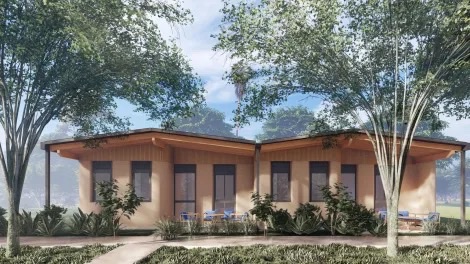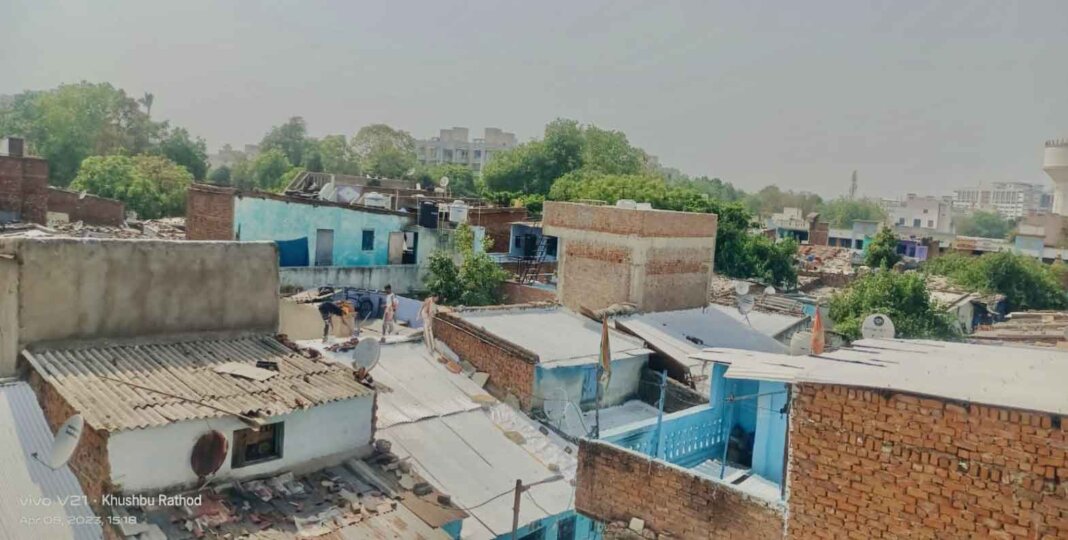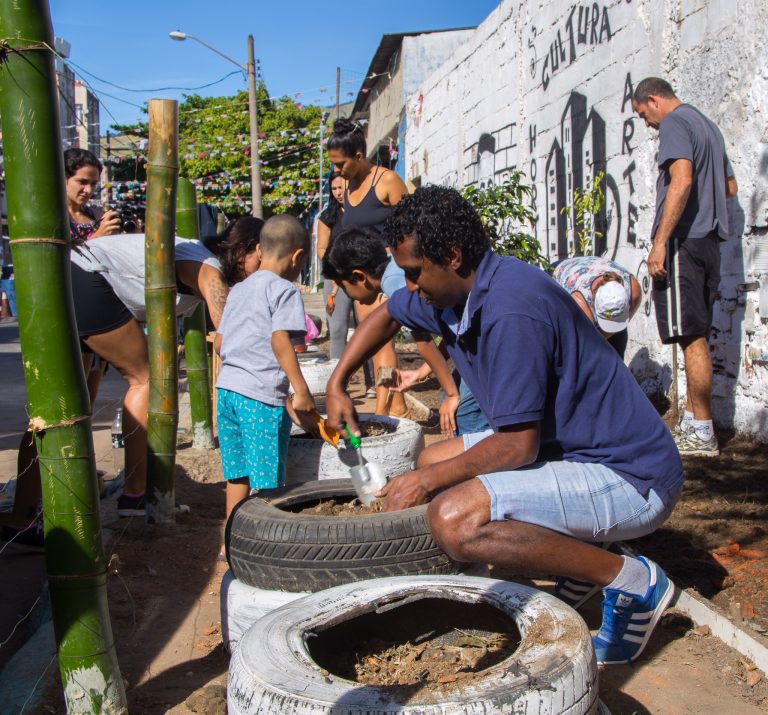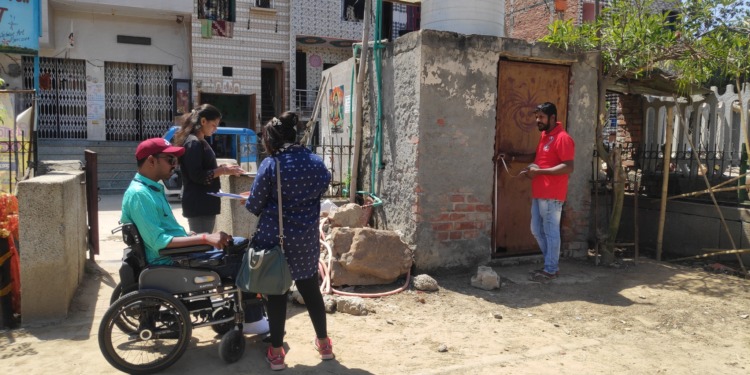In the face of the challenges faced by residents of informal settlements, three initiatives are pioneering sustainable and inclusive housing solutions.
The Green Building Sector’s Global Significance
The UN’s warning is clear: if we don’t address poverty and inequality, a staggering three billion people will live in slums by 2050. These often-overlooked settlements are like bustling, self-sufficient cities, cleverly managing vast resources.
In response to this impending crisis, the green building sector emerges as a ray of promise for individual nations and the entire world. Through a dedicated focus on creating sustainable, eco-friendly housing and structures in low-income regions, numerous initiatives are crafting the blueprint for a greener urban future.
14Trees in Kenya
Kenya, like numerous African nations, grapples with the repercussions of swift urbanization. This surge in urbanization has triggered an unprecedented demand for housing, giving rise to sprawling informal settlements.
Nairobi, Kenya’s capital, provides a stark illustration, with approximately 60% of the urban population residing in informal settlements like Kibera and Mathare.

These informal settlements are marked by overcrowding, limited clean water and sanitation access, and substandard housing structures. To deal with the challenges, many residents reside in makeshift houses constructed from corrugated iron sheets and mud—materials ill-suited to withstand the harsh impacts of climate change.
Amidst these obstacles, 14Trees has emerged as an impressive force, spearheading the transformation of sustainable housing in Kenya.
Notably, 14Trees’ endeavors feature a distinctive building material: compressed earth blocks (CEBs). These blocks are crafted from locally sourced earth, boasting eco-friendliness and remarkable durability.
In addition, the company has recently introduced a cutting-edge, African-made printer poised to become the cornerstone of its construction efforts. A recent example of its impact can be seen in the village of Kalonga in central Malawi, where the company’s technology was harnessed to construct a 3D-printed school for children.
Additionally, 14Trees has created the 52-unit Mvule Gardens development, one of the world’s largest 3D-printed affordable neighborhoods.
While 14Trees’ methods of constructing sustainable and affordable housing are, additional work is needed after construction. These include painting, plumbing, and wiring.
Despite potential challenges in the building process, if the company’s construction methods are embraced in areas like Kibera, they could lead the way for the future of Kenya’s green housing sector and deliver benefits to those in greatest need.
RELATED ARTICLES: Do Urban Slums Hold the Key to The Future of Circular Cities | Sustainable Buildings: Pioneering a Green Revolution in Urban Design
Mahila Housing Trust (MHT) in India

Like Kenya, rapid urbanization has forced India to deal with a significant upsurge in informal settlements. Within this complex landscape, Mahila Housing Trust (MHT) has emerged with its own solutions.
Founded in 1994, MHT fundamentally focuses on improving urban-built environments within economically disadvantaged communities through collective action.
The trust’s mission is to ensure that city-level planning processes hear the voices of marginalized communities. This endeavor has involved the development of grassroots-level partnerships with women to cultivate resilient communities within India’s informal settlements.
Recent years have witnessed MHT’s profound impact, particularly as India has faced record-breaking heat waves.
In response, MHT has undertaken innovative measures such as providing women in informal settlements with sun-reflective white paint—a cost-effective alternative for residents with limited financial resources who lack access to conventional cooling options like air conditioners.
Notably, in Amalner, MHT has made strides by collaborating with HSBC bank, championing the cause of “Making Amalner Defecation Free.” This initiative has led to the trust working with local communities to transform plots of land, previously used as open defecation sites, into green spaces.
Beyond environmental sustainability, the initiative has also contributed to increasing groundwater levels. Alongside this, they have worked to alleviate the heat island effect and nurture a more diverse and vibrant community ecosystem.
What sets MHT apart from 14Trees is its dedication to amplifying the voices of the marginalized in India.
Catalytic Communities in Brazil

Now, let us shift our focus to the vibrant landscape of middle-income Brazil.
Much like India, Brazil boasts some of the world’s most historic urban informal settlements favelas. However, overcrowding and inadequate infrastructure are among the issues that have come with rapid urbanization and the influx of residents.
Amid this urban landscape, is Catalytic Communities (CatComm). Since 2000, the NGO has been a staunch supporter of Rio’s favelas in their journey toward sustainability. The organization envisions a future where favelas recognize their heritage, and residents attain equal citizenship status.
CatComm has taken a multifaceted approach to achieve this goal, supporting individuals and organizations dedicated to community-led development. An impressive example is their sustainable favela network. This network brings favela collectives together to install solar panels and set up green roofs and community gardens.
What is particularly remarkable about this network is that it strengthens environmental sustainability and social resilience in favelas across Rio. Additionally, the organization follows a ‘do no harm’ philosophy, respecting the residents and refraining from activities that disrupt their lives.
Guiding Lights for the Future of Inclusive Urban Development
These initiatives are a reminder that there is no one-size-fits-all model for addressing the challenges of informal settlements. Each context demands a tailored approach that respects the agency and needs of the residents.
As we chart our course toward meeting the United Nations’ Sustainable Development Goals, let these initiatives inspire us to dream bigger, greener, and aim higher.
Editor’s Note: The opinions expressed here by the authors are their own, not those of Impakter.com. — In the Featured Photo: Mahila Housing Trust. Featured Photo Credit: WRI.









